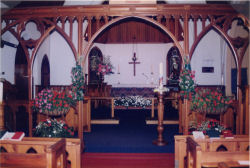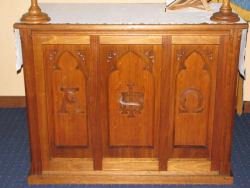St Agnes Anglican ChurchA History Compiled from Several Sources1888About the year 1888 or 1889, after the railway was extended from Brighton to Sandringham, Mr G. Hamilton Traill and family came to live at "Glenmore", Bluff Road. Mrs Traill was greatly concerned over the lack of religious training for children. She began the first Sunday School in Black Rock, in the front room of a house belonging to a Mr Wilson in Seaview Crescent. 1892The Congregationalists built a small wooden building on the site in Arkaringa Crescent on which their brick church was later built. They at first used it for services on alternate Sundays only, and offered the use of it at other times to the church people. 1894Around 1894 Rev Caffin gave up services at Beaumaris. He brought over to Black Rock a beautifully made desk which had been given to him by Mr Smart, an architect from Beaumaris — the desk had been made from blackwood left over from the Cathedral pews. It was used both as a lectern and a pulpit. It was not long before an organ of American design was bought and played by Mr John Miller Gawler. Mr Traill bought a block of land between Bayview and Arkaringa Crescents and gave a portion of it as a site for the Church—the site on which St. Agnes now stands. 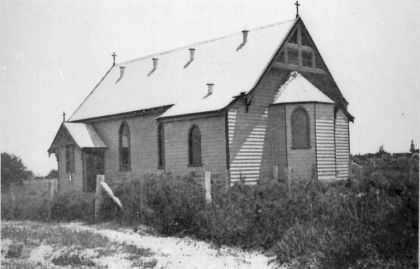
First Church of St.Agnes, dedicated 21 July 1899 by Bishop Goe. 1899The church was begun in the year 1899, the architects being Messrs Carleton and Carleton, and the builder Mr Hayball, of Brighton. The date for the dedication was fixed for 21 July 1899, but the workmen were hardly out of the building by that date, and everyone had to work hard to have the church ready and the grounds cleared up for the evening. The inside was very plain and simple on the day of dedication, lined with plaster, with a stained wood dado. The chancel was raised two steps above the nave, and a small sanctuary one or two steps higher. The Altar was covered with a red superfrontal and a white frontal. On the carved Retable (work of Lily Drummond) was a carved cross and a pair of brass vases (sent from Sydney by the Misses Vetches). The Sanctuary floor was covered with a red carpet and a strip was laid down the centre of the Choir Stalls which were plain wood. The small American organ had been brought from its temporary home in the Congregational Church. At the west end was the Font given by the children who had saved their pennies for the past 2–3 years. The flowers on the Altar were Narcissi. The blackwood desk was fitted to a foundation and used as the pulpit. The people of All Souls, Sandringham, gave a plain wooden lectern. 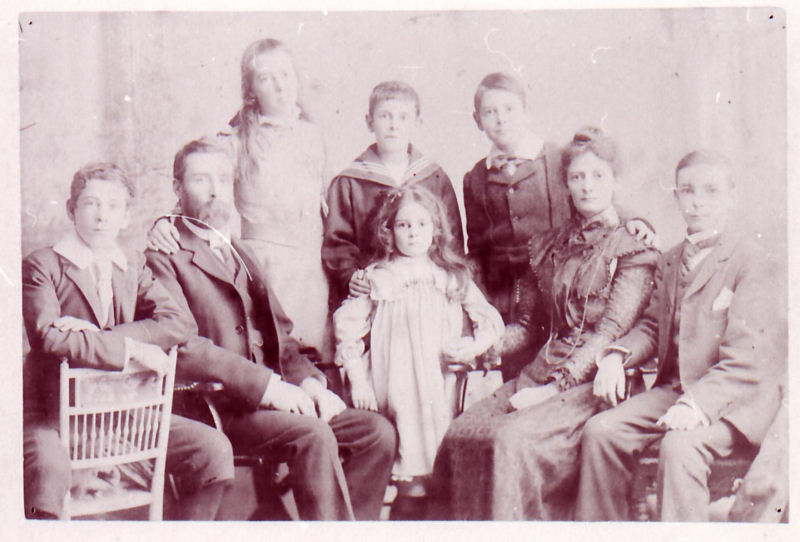
C.1900. Studio portrait of Mr & Mrs J M Gawler and family. Some months later Mr George Hamilton Traill gave two stained glass windows for the sanctuary in memory of Mrs Traill. His daughter Elsie carved panels for the Sanctuary and Chancel screens. There were many baptisms in the early days of St Agnes'. The first marriage was celebrated on 12 December 1899 by the Rev Canon Tucker, the parties being Miss Edith Jerrard and Mr Boothby. The first funeral to leave the church was that of Mr J Evans. Among the "identities" of these days was an old couple of the name Topin. No one knew how long they had lived in Black Rock. Their home was a hut made of kerosene tins, hidden away in the scrub. They earned their living by gathering mussels and perriwinkles, and would be seen in the water up to their waists in all weathers. It was considered a great triumph when Mrs Topin was prevailed upon to come to church. The only thing she objected to was that some of the girls in the congregation laughed at her hat, which was indeed a queer erection. She was the scholar of the two, and used to read the papers to Topin. He was a Londoner of the Costermonger type, and could neither read nor write. 1904An anonymous gift of a carved lectern was made to the Church — it is this same lectern which has graced the Church ever since. Fortunately it was one of the pieces of furniture saved from the disastrous fire of 1913. 1907A request was made for the Sunday School Hall to be used by the Black Rock State School – this was refused on the grounds that the Hall was to be used exclusively for Church of England purposes. This year also saw the death of George Hamilton Traill who passed away in Rome. A Memorial Window was placed in the west window on the north side of the Church, at a cost of £34. The window was designed by Mr Montgomery and the subject matter is a figure of Saint Simeon. 1913 — The FireShrove Tuesday, 4 February 1913, was one of those awful days of raging north wind blowing from morning to evening. In some way the scrub at the back of a house in Bay View Crescent caught fire. The house was a fair-sized weatherboard structure, with a thick hedge at the back and a row of tall pine trees at the side. The house was unoccupied at the time. It did not take long for the wind to fan the flames into a raging, devastating fire. The hedge was soon alight, and it was but a question of a few minutes before the house was ablaze. Then the pine trees caught fire. The house was burnt to the ground and the gaunt stems of the trees left standing. Bay View Crescent, as it was then, was not wide enough to stop the fire. The flames, blown by the fierce wind, leapt across, and the scrub on the other side, behind the church, caught fire. Before anything could be done, the hedge and then the parish hall were ablaze. The people who assembled in Arkaringa Crescent were powerless to do anything. There was no water. They saw the church was doomed. But for the Rev C.W. Wood and a Mr Rayment, a church organist, who were staying at Black Rock at the time, nothing would have been saved. The church was locked, and the key some distance away. These two men called upon the people to help them. With an axe they broke open the door, and rushed in. Someone tried to save the things in the vestry, but by that time the north wall was on fire, and as a surplice was seized it caught fire. The altar [now in the Lady Chapel], with the cross and the vases and the violet frontal, were first taken out, the pulpit was wrenched up, and the lectern, the font, and the picture above the font were taken out, together with some seats and books. But all the rest had to go. The windows, the chancel screen, the new organ, which had just been paid for, and all the things of the vestry were burnt; nothing was left except a ball of silver which was all that remained of the Chalice. 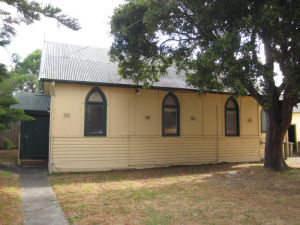
2013. Built in 1913, the Hall behind St Agnes Church. The proprietress of the Linga Longa Tea Rooms on the Beach Road offered her large room for church services, so all things saved from the fire were stored at her house, and on Sundays services and Sunday School were held in her dining room. Two days after the fire a meeting was held in the home of Mr Gawler, to plan the re-building of the Church. Amongst other resolutions it was resolved – "that a school room be erected without delay – 36 feet by 30 feet with a stage 20 feet by 15 feet and an ante-room 15 x 10, all to be used for Church purposes pending the re-building of the Church." The new Hall was in fact built by Easter. Both Church and hall had been insured to their full value. On 2 November 1913 the foundation stone of the new brick church was laid by Miss Elsie Traill, as a tribute to the interest taken by Mr Traill and family in the original Church. 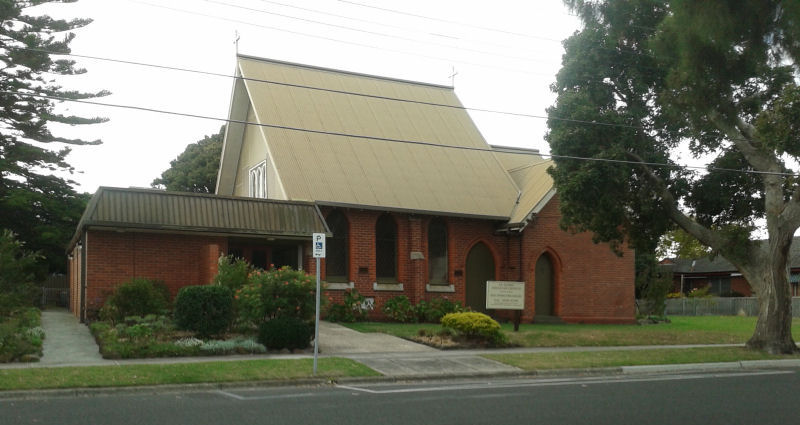
2013. St Agnes Church in Arkaringa Crescent. 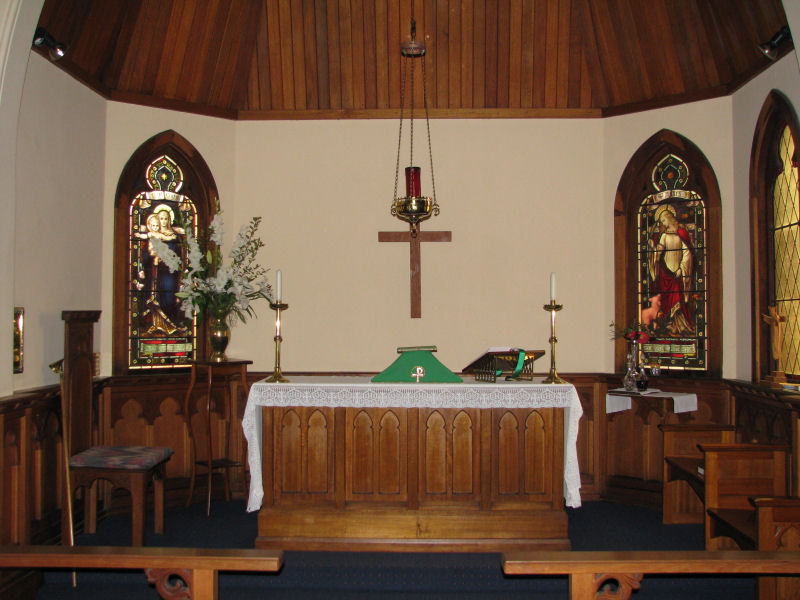
The present altar with two of the three replica stained-glass windows in the background Mr W H Montgomery, who designed the original stained-glass windows, had made replicas of the three windows, and except for the chancel screen and pulpit erected later to the memory of the Rev Wilford Downs James, the pipe organ, and the other alterations...the Church was much as it is to-day. 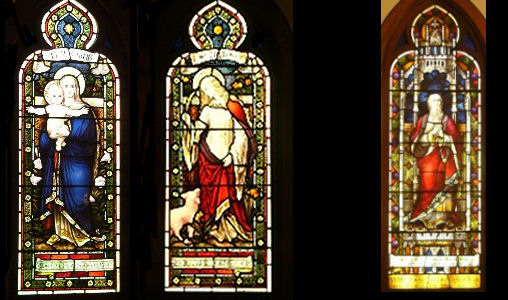
1914 — The WW1 Honour BoardNearly every boy in the Sunday School at that time answered his country's call in the Great War, and his name may be seen on the honour board of the present church. The board itself was the work of one of those boys, Duncan Philip Gawler, a noted wood carver of his time, completed just before he left for the front, and dedicated shortly after the news of his death came to hand. 1916From Sr Kathleen's reminiscences: On Easter Eve ... April 11 1916, the present Church was duly consecrated by Archbishop Clarke. There was no debt on the Church, but, up to the last he was against consecrating as he said it was not a complete building, having the temporary wall at the west end. However he consented in the end and the Church was duly consecrated. The Church was full to the doors and it was a service of great joy and thanksgiving. [The Narthex extension was added in 1975.] The installation of a Pipe Organ was completed and saw service for many years before being sold in the 1960s to St Mary's South Camberwell. This year also saw the commencement of Boy Scout training as a part of Church activities. Each year in the spring, flower services for the children were held — it those days there were not many flower gardens in Black Rock as there was no water laid on — the flowers brought by the children were mostly wild flowers — these were taken the next day to the Children's Hospital in Melbourne. 1919–1922Black Rock Primary School (founded in 1910) purchased additional land in November 1918, but the brick building providing extra classrooms on the extended site was not constructed until 1922. In the meantime St Agnes Hall was leased for two years at £40 per annum. Despite an objection from Annie McCaughey that she had been using the hall in 1917 to conduct a private school for 21 children, and Public Health Department reports in 1918 and 1919 listing additional facilities and conditions necessary for the building to be used as a day school, the St Agnes accommodation was used for classes from Black Rock State School, No. 3631, until the new brick building was completed in 1922. 1920Electric light was installed in the Sunday School Hall and the Church at a cost of £29.1.0. 1922Water was laid on at the Church and this dispensed with the need for the 600 gallon water tank – which was valued and sold for £2. 1923A Church School was established and advertisements for pupils were placed in The Sun and The Age. 1925[An advertisement in The Age, 2 December 1924, called for contractors to connect the sewer to St Agnes Church and Vicarage, so it would have occurred in 1925.] In her reminiscences dated 1925 of St Agnes' Black Rock, Sister Kathleen Traill wrote: ...my father gave two stained glass windows in memory of my mother, of which there are replicas in the present Church. Later he gave the carved lectern which is in the Church now. Elsie Traill also by degrees carved panels for the Sanctuary and the Chancel Screen. A blue dossal was also added to the Sanctuary and an oak altar carved by Phillip Gawler [now in the Lady Chapel] at a later date. 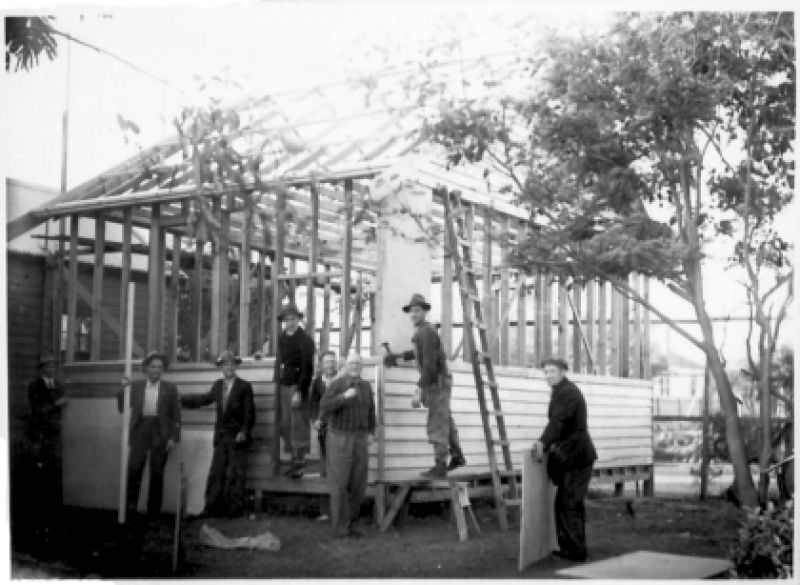 1935. St Agnes small hall construction. S092N79A 1935In March it was agreed to allow an additional hall to be erected for the Men's Club — size to be 15 x 26 feet. The Club was formed in January with a membership of 35. [In later years it was used by the Lapidary Club.] 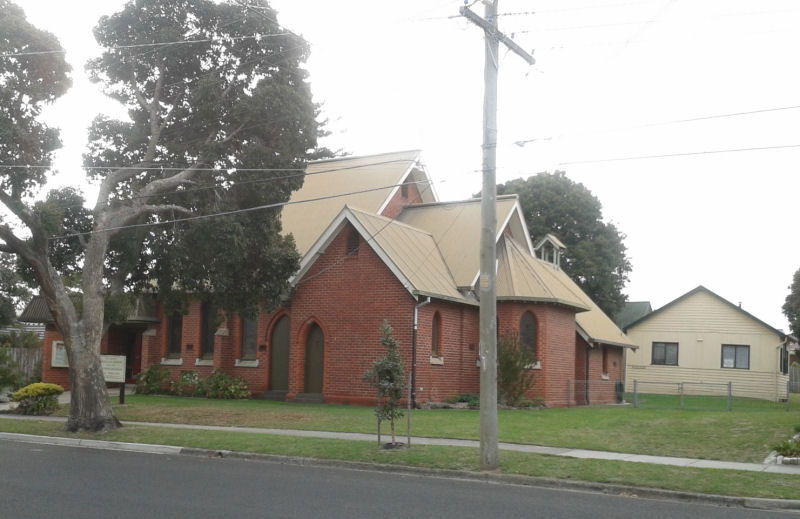
2013. St Agnes Church with the small hall constructed in 1935 in the background. 
c.1950. (North to the left) Arkaringa Crescent (West) and Bluff Road at the top. St Agnes Church with tennis court next to it. 1967A new Vicarage was built during 1967, using funds from the sale of land at the corner of Bluff Road and Arkaringa Crescent. This land had been a gift from the Misses Trail. The land sold for $42,000. The aerial photograph on the right dating from c.1950 shows the Church with its School Hall behind, and Small Hall; a tennis court next to the Church; the old Vicarage next to that; and the land running to Bluff Road owned by the Traill sisters. 1975The Narthex extension was added. It was further enhanced in 2007. Robert Prenzel and the EagleOn 17 February 1992, Frank Adams wrote to the Rev Roger Prowd at St Agnes Church, Black Rock. He said: Dear Roger, 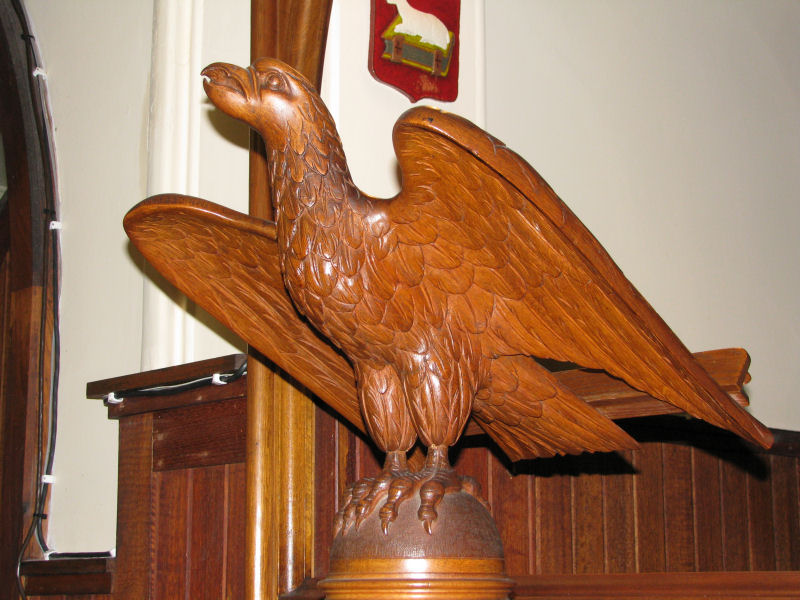
In support of this suggestion, the National Gallery of Victoria has a sketch from 1935 by Robert Prenzel of a design for an eagle lectern, and an article in PIX magazine 3 February 1940 (p36) has a photograph of Prenzel working on the eagle lectern for St Hilary's Church, Kew. Although Frank Adams surely recognised the work of his grandfather, he may be wrong about the date of its installation in St Agnes. There is no mention by past historians of such a change of lectern in the 1930s. Indeed there is a reference that the latest lectern was an anonymous gift made in 1904 and saved from the 1913 fire. This is supported by a note from Miss Kathleen Gawler written some time before 2000. Robert Prenzel had arrived in Melbourne from Europe in 1888 to view the Centennial International Exhibition and stayed. In 1903 he moved to Potter Street, Black Rock, so he was in the neighbourhood at the time. Sources:
|



